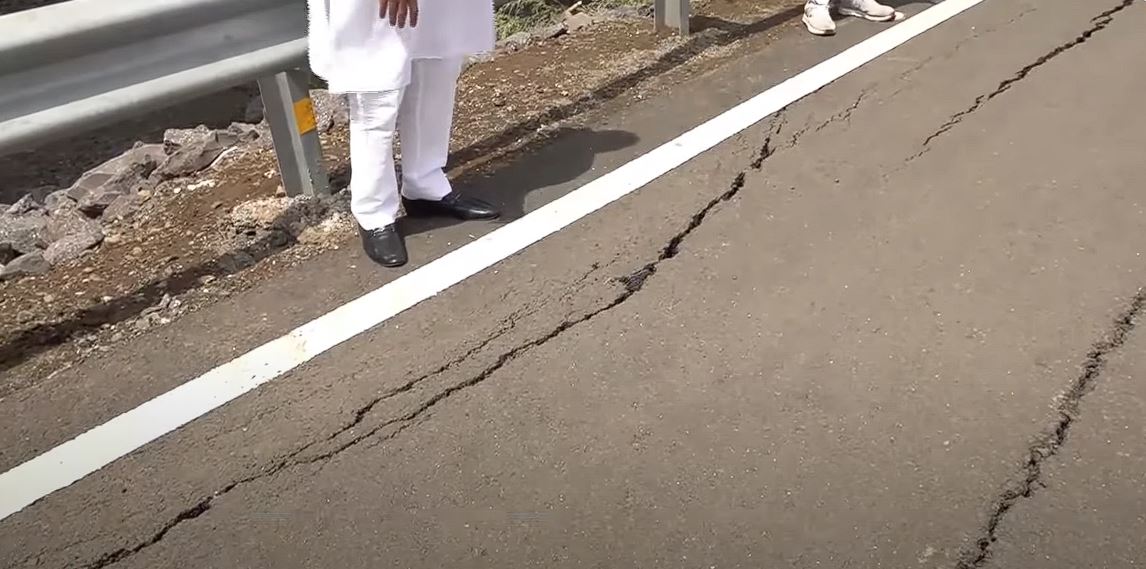Introduction
The Atal Bihari Vajpayee Sewri-Nhava Sheva Atal Setu, popularly known as the Mumbai Trans Harbour Link (MTHL), has recently come under scrutiny due to cracks appearing on its tar road exit towards Ulwe in Navi Mumbai. As the longest sea bridge in India, the MTHL was inaugurated by Prime Minister Narendra Modi just over five months ago. However, these cracks have sparked allegations of corruption and raised concerns about safety and infrastructure quality.
The Controversy Unfolds
- Congress Accusations: The Congress party has accused the government of corruption in the construction of the Atal Setu. Maharashtra Congress chief Nana Patole visited the site to inspect the cracks and emphasized that this issue is not merely an allegation. He questioned the government’s commitment to public safety and urged action against corruption.
- Government Clarification: In response, the Maharashtra government clarified that the minor cracks were found on the approach road connecting to the Atal Setu, not on the main bridge itself. They asserted that the affected footpath is separate from the critical infrastructure of the bridge.
The Significance of Atal Setu
- Inauguration and Cost: Constructed at a staggering cost of approximately Rs 17,840 crore, the MTHL was inaugurated by Prime Minister Narendra Modi in January this year. The bridge is named in honor of former Prime Minister Atal Bihari Vajpayee, a respected figure in Indian politics.
- Enhancing Connectivity: The Atal Setu serves as a major infrastructure project aimed at enhancing connectivity between Mumbai and Navi Mumbai. By reducing travel time and improving access, it plays a crucial role in regional development and economic growth.
The Irony of Corruption
- Atal Bihari Vajpayee’s Legacy: The bridge’s name carries the legacy of Atal Bihari Vajpayee, a statesman known for his leadership and vision. It is unfortunate that corruption allegations surround a project bearing his name, raising questions about accountability and ethical governance.
- Safety Concerns: Cracks observed on one side of the tar road have raised safety concerns. While the bridge itself remains unaffected, the optics of such issues are damaging. The Congress’s photo of Prime Minister Modi from the inauguration day adds to the controversy, highlighting the need for transparency and accountability in infrastructure projects.
Conclusion
The Atal Setu controversy underscores the delicate balance between development, public safety, and integrity. As investigations continue, it is essential for authorities to address concerns promptly and ensure that infrastructure projects uphold the highest standards. The longest sea bridge in India must stand not only as a testament to engineering marvel but also as a symbol of trust and responsibility toward the citizens it serves.
History of Atal Setu
The Atal Setu, officially known as the Atal Bihari Vajpayee Sewri–Nhava Sheva Atal Setu, is a remarkable infrastructure project connecting Mumbai with Navi Mumbai. Let’s delve into its fascinating history:
Origins and Need
- In the 1990s, the Mumbai Metropolitan Region Development Authority (MMRDA) recognized the urgent need to address traffic congestion and accidents in Mumbai.
- The rising population and economic growth demanded better connectivity between Mumbai and its satellite city, Navi Mumbai.
Project Details
- Length: The Atal Setu spans an impressive 21.8 kilometers (13.5 miles).
- Design: It is a 6-lane grade-separated expressway bridge.
- Location: The bridge starts in Sewri, South Mumbai, crosses Thane Creek, and terminates near Chirle in Uran taluka, Navi Mumbai.
- World Record: It holds the distinction of being India’s longest sea bridge and the 12th longest sea bridge globally.
Construction and Inauguration
- Construction Start: Work on the bridge commenced in April 2018.
- Completion: Despite setbacks, including an eight-month delay due to the COVID-19 pandemic, the Atal Setu was completed in December 2023.
- Inauguration: Prime Minister Narendra Modi inaugurated the bridge on January 12, 2024.
Key Features
- Width: The 6-lane highway is 27 meters wide, with two emergency exit lanes.
- Capacity: It can handle 70,000 vehicles per day.
- Cost: The project’s total cost was ₹17,843 crore (US$2.1 billion).
The Atal Setu stands as a testament to modern engineering and serves as a vital link between two bustling cities, enhancing connectivity and easing travel for millions of commuters12.





